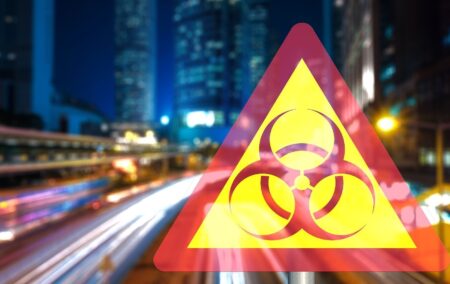Doctors’ families have the joy of hearing all manner of stories about patients, from the sad to the weird and wonderful. My father recently told us about a patient who had brought her toddler along to an appointment. The toddler was restless and, to keep him distracted, my father gave him pen and paper and asked him to draw something. At the end of the appointment the child showed him his drawing. It was a picture, rendered in surprising and remarkable detail, of a viral particle.
The response across the globe to the pandemic has been quite considerable, with economies taking a hammering as a result. South Africa’s GDP, on the back of a decade of destructive policy decisions, is predicted to shrink by over 7%, with 4.5 million people already having lost their jobs, or been furloughed, since the outbreak of the pandemic. Even powerhouse countries have felt the burn – in the United States, the unemployment rate jumped from 3.5% in February to 14.7% in April, and the United Kingdom has been declared in recession, with the British economy shrinking by 20.4% in the second quarter of 2020 due to Covid lockdowns.
South Africa has experienced the longest lockdown in the world, with some of the most abhorrent and draconian restrictions being imposed, including the utterly deplorable situation reflected in charitable organisations having to seek a court order to get the government’s own National School Nutrition Programme to resume. The absence of this programme impacted the health of millions of learners, with knock-on effects on their families.
With all the havoc wrought by the lockdown, we persist with ‘protection’ measures against the virus; many institutions take one’s temperature (mine has ranged from 31℃ to 39℃ in a given day). This is merely a box-ticking gesture to appease the government and assuage the fears of those most spooked by the disease.
At some restaurants, not only is your temperature taken but you have to wear a mask. You are shown your temperature (which is completely meaningless, as a high temperature could be the result of a variety of things), you proceed to sit down, take your mask off and have a meal with a room full of other people doing the same.
All the while, taxis are operating at 100% capacity.
From the mundane to the ridiculous
Then from the mundane to the ridiculous: upon the re-opening of public parks in Johannesburg, the Covid prevention measures included mandatory mask-wearing, maintaining social-distancing of 3 metres, along with contact-tracing logging, hand-sanitising and temperature-taking at arrival. All this to exercise outside, where, according to one study, your chance of contracting the virus is 0.000016%. All this has really achieved is traffic and pedestrian congestion at park entrances.
At the Kruger National Park (KNP) – which spans both Mpumalanga and Limpopo – due to the restriction on intra-provincial travel and leisure accommodation, the instruction is that ‘(travellers) may only overnight in their province of residence e.g. if they are from Limpopo, their booking must be for KNP Rest Camps in Limpopo…Within the KNP, the Olifants River is recognized as the boundary between Mpumalanga and Limpopo’.
And this is part of measures designed to save lives, but compromising the already ravaged tourism sector which supports 1.5 million jobs and contributes 8.6% to the country’s GDP.
We are all playing along with these rules and regulations and, by and large, virtue signalling our way from one establishment to the next, taking meaningless steps to reduce infections. While the public plays its part, Covid testing has reduced dramatically: community outreach tests peaked at 11 000 per day on 24 July, but, by 11 August, had dropped to just over 2 000 per day. Is anyone actually taking this seriously anymore?
Other health concerns
It is important to acknowledge that South Africa got swept up in the global wave of hard lockdowns (overwhelmingly in the West) in the face of this disease. Considering the other health concerns that we face, it is useful to see how misplaced this reaction was.
According to World Life Expectancy data, South Africa has a Covid-19 death rate per 100 000 of approximately 19.5. Consider this against the following rates for other causes of death:
Road Accidents = 22.4
Diarrheal diseases = 32.59
Tuberculosis = 50.99
Influenza and Pneumonia = 86.08
HIV/AIDS = 195.94
Either we need to be more serious about the measures we are putting in place that do actually help to prevent the spread, or we might as well drop the act. We have an economy that is in the pits, unemployment that is skyrocketing and other health concerns that deserve much more attention than Covid-19 has received.
Enthusiasm for taking this disease seriously has surely waned, undermined largely by bizarre restrictions and contradictory laws.
Please, let’s stop pretending.
If you like what you have just read, subscribe to the Daily Friend


